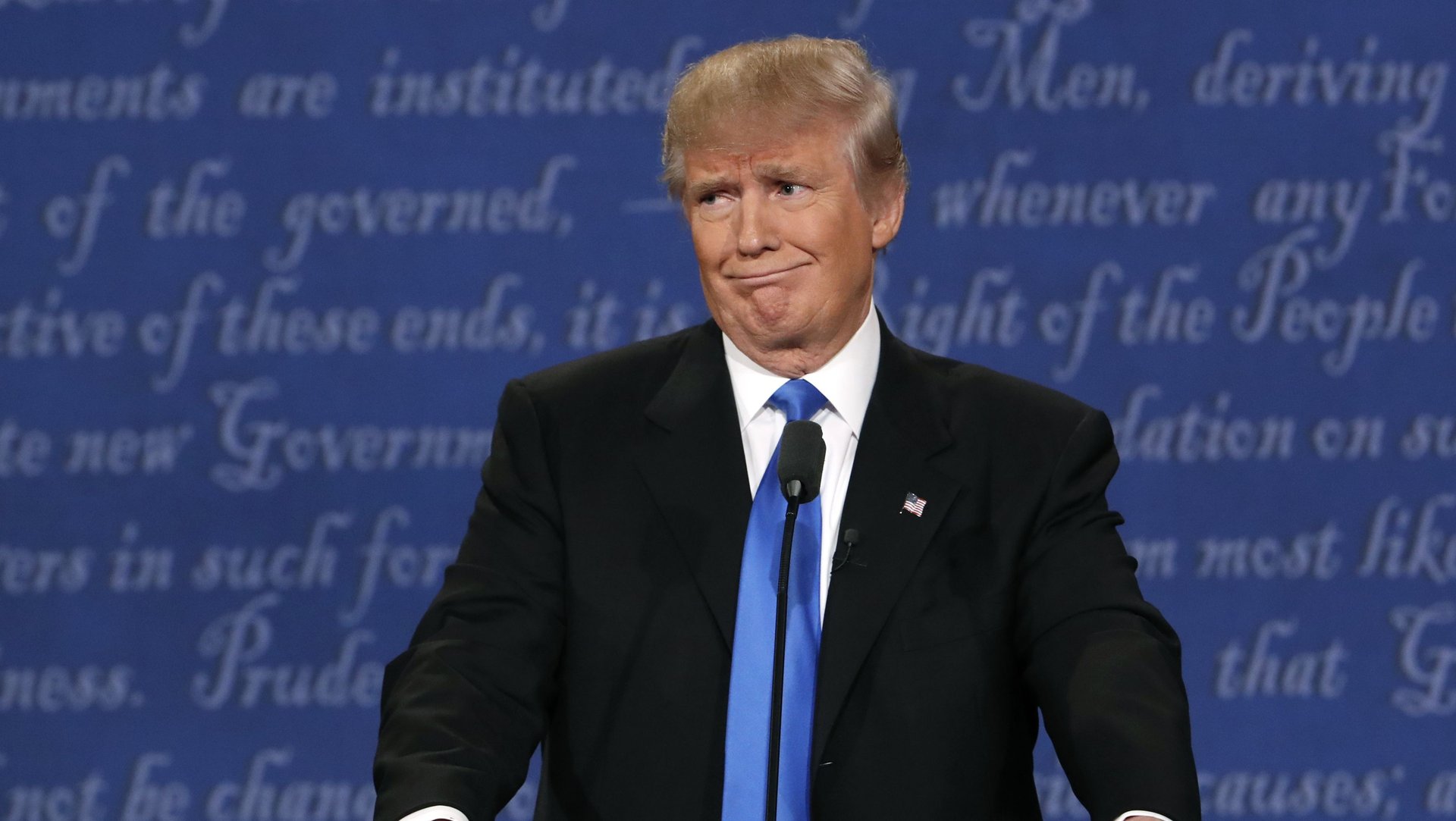Donald Trump has Twitter. Why does he need to do press conferences?
More than five weeks after his election, Donald Trump has announced plans to hold his first formal press conference. The US president-elect and his children will field questions from the media on Dec. 15 about Trump’s decision to leave his business in order to run the country.


More than five weeks after his election, Donald Trump has announced plans to hold his first formal press conference. The US president-elect and his children will field questions from the media on Dec. 15 about Trump’s decision to leave his business in order to run the country.
He announced the move—as with everything he does—on Twitter, a platform that has become pivotal to his presidency.
Social media has made it possible for Trump to hold off on a press conference for this long—the longest of any president-elect since 1976. Trump has shed light on key pieces of his transition, like who he’s considering for his cabinet and his plans for his first hundred days in office, through Facebook, Twitter, and YouTube, instead of through the mainstream media.
As for the press, it has largely amplified the messages that Trump broadcasts on Twitter—such as his as-yet-unsubstantiated claim that “millions of people” voted illegally in the election, which became a cacophony of news alerts and headlines this week. Outlets like CNN and the New York Times refuted it, but they still led by reporting it. As one of Trump’s closest political allies, Newt Gingrich, pointed out on Fox News: “The news media is going to chase the rabbit. It’s better off for him to give them a rabbit than for them to go find their own rabbit.”
There’s no law, after all, that Trump has to speak with the press as president. Press conferences used to be an important tool of the free press. They allowed journalists to have a dialogue with lawmakers and elites. And they allowed for greater transparency, because reporters could ask questions and dig deeper on the issues. But in today’s 24-hour news cycle, press conferences often get derailed by reporters who are more interested in inciting reactions than extracting information from the exchanges.
Even Hillary Clinton came under fire for not holding a press conference for more than nine months—perhaps another sign that the press conference is on the way out in the age of social media.
Gingrich suggested that social media is just part of Trump’s strategy to control the narrative around his administration—considering he’s never had a good relationship with the press. “He is not going to fall into allowing the elite media to define who he is and allowing them to censor what the American people learned,” Gingrich said. “He does not think of this as chaos. He thinks of this as creativity.”
Critics have accused the president-elect of using social media to distract the press—and the public—from more pressing issues tied to his administration. His Hamilton tweets diverted attention away from more pressing matters. There are hundreds of news stories about the feud online—far more than on his $25 million settlement over Trump University, which happened around the same time.
It’s interesting, though, that Trump’s first press conference in more than four months surrounds a critical issue like the conflicts of interests that would have been introduced by his business dealings. Perhaps he realized this is a topic he needed to address to the public’s satisfaction before entering the White House.
But having an open line with the press might not serve Trump’s agenda—so far, he’s found much more success communicating directly with the public.